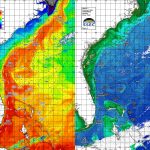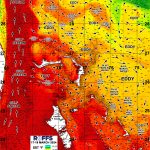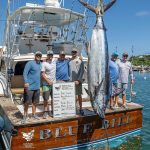St. Augustine Buoy, An Ocean Catastrophe & A World Record Oyster Old Enough to Drive
Read below for summaries of these stories and click the links below to be taken to our website to read the full articles/stories.
NEWS
Removal of St. Augustine Buoy Worries Fishermen, Surfers and Ocean Rescuers
Mariners from surfers to businessmen say they’ve lost a vital source of information.
Buoy 41012, known locally as the St. Augustine buoy, was “disestablished” Wednesday, which is government speak for shut down. The U.S. Coast Guard picked it up and returned it to the National Data Buoy Center, which is part of the National Oceanic and Atmospheric Administration.
Mariners, commercial and recreational fishermen, surfers and maritime businesses relied on real-time data from the buoy located 40 miles offshore east-northeast of St. Augustine. The buoy’s data about ocean wind, sea temperature, wave action and other weather conditions was a touchstone as well for National Weather Service forecasters, marine search and rescue, and law enforcement agencies. Click here to read more about this story on our website…
An Ocean Catastrophe – This Should Be a Wake-Up Call That You Can’t Afford to Hit the Snooze Button On
I’ve been a commercial fisherman from Alaska to Antarctica for 40 years and have made it through hurricanes, gales and freak waves. I’ve seen the unregulated growth in the longline fishery here in Hawai‘i and the collapse and closing of the bottomfish and lobster fisheries in the Northwestern Hawaiian Islands. However, I’ve never been more frightened in my life of the sea or what is happening in our fisheries than now– and that’s while I sit here safe at my desk writing this.
Since the 2011 Japanese tsunami, a number of studies have been conducted to determine what effects marine debris and other contaminants have had on the ocean and marine life. Individually, the results are scary, but when you connect the dots, they point to a catastrophic event that is now brewing in the Pacific. These aren’t assumptions or hypothetical models; these are the facts about what is happening right now. When you add them all up and realize they are all happening simultaneously in the Pacific, the ramifications are beyond anything anyone ever imagined.
After the tsunami, some said that the “best-case scenario” would be for the estimated 55 billion lbs of debris discharged into the ocean to sink or “break down into smaller pieces,” called micro-plastics. Unfortunately, they were wrong. Click here to read more about this story on our website…
World Record Oyster
The world record mullusk found late last year in Denmark now holds the Guinness entry for largest oyster.
Discovered in October, the certified world’s largest oyster is 13.97 inches, and 4.21 inches wide. It’s actually attached to five other oysters, so the total weight is an astonishing 3.56 pounds.
NPR got a hold of Christine Ditlefsen, the biologist at the Wadden Sea Centre where the oyster was found. It’s located in southeastern Denmark on the North Sea. Click here to read more about this story on our website…






